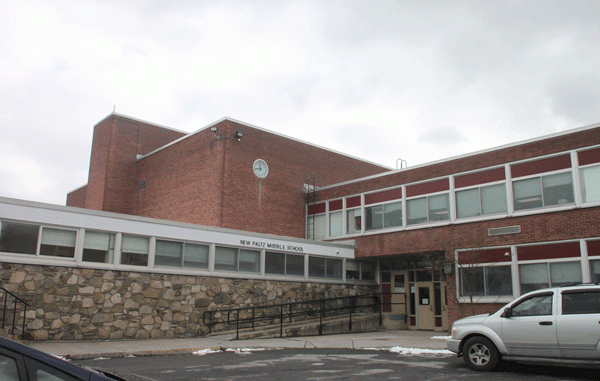
The New Paltz school district is in “fiscal stress,” according to a report from the state Comptroller’s Office.
The report released on Jan. 28 by Thomas DiNapoli shows fiscal stress rankings of school districts statewide over the past three years.
DiNapoli’s “Fiscal Stress Monitoring System” was launched in 2013 to monitor local governments and school districts to determine an early warning of fiscal stress. The system evaluates a number of budgetary issues like operating deficits and year-end fund balances, according to a Fiscal Stress Monitoring System fact sheet.
This year, 82 school districts are experiencing some degree of fiscal stress. Eight districts, none in the Mid-Hudson region, are in “significant fiscal stress,” the highest category while 50 districts were susceptible to fiscal stress.
New Paltz has been on the “moderate fiscal stress” list for the second year in a row. Twenty-four other districts are also classified as having “moderate fiscal stress.”
A main cause to school districts’ financial issues is the Gap Elimination Adjustment (GEA). It was created to help close New York’s $10 billion budget deficit during the year 2010-11 which reduced state aid to school districts.
The property tax levy limit law, also known as the tax cap, continues to constrain school districts’ ability to increase their property tax levies. The tax cap, which went into effect shortly after the GEA, limits tax levy increases to the lesser of the rate of inflation or two percent. The state’s base cap for school district tax levy for 2016-17 is just .12 percent.
The New Paltz Assistant Superintendent for Business Richard Linden, explained the district is in fiscal stress because instead of saving most of the fund balance to pay for next year’s budget, they used the money to keep as many staff positions as they could.
“We have been trying to delay cutting positions as much as possible, but we’ve still had to cut many staff members,” Linden said.
Linden also said legally the district is allowed to keep four percent of the fund balance which is equivalent of about $2. The New Paltz districts have only been keeping between $100,000-$200,000 in order to keep as many staff members and education programs as possible.
Superintendent Maria Rice believes the district must maintain educational value in its schools but this has proven difficult with New Paltz’s unappropriated fund balance.
“The most affected areas are kindergarten through 12th grade,” Rice said. “We’ve had to cut out electives and class sizes have increased in every building.”
Classes now contain 30-35 students which may cause students to not receive beneficial attention from their teachers.
Rice said the district is trying to find creative ways with the cut backs to create a cohesive and inclusive environment for the students. For example, the district had to cut a library media specialist and is now trying to fill the gaps with computer science education.
Linden said the there needs to be an increase in state aid or a decrease in the tax cap in order to keep money in the fund balance.
“We just do not make significant cuts,” Rice said. “It’s not who we are in New Paltz.”
